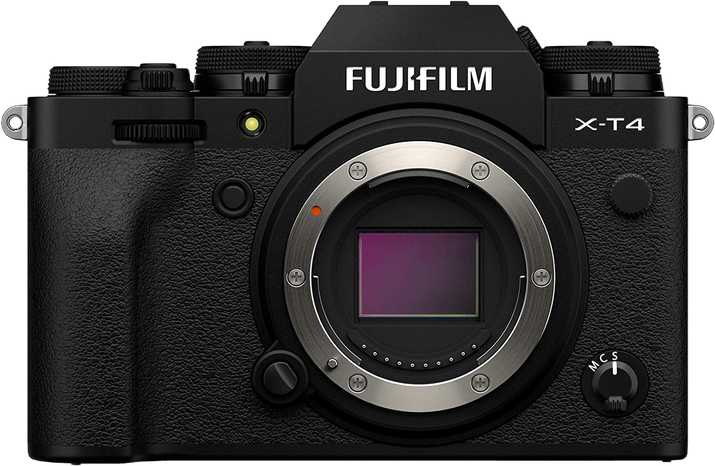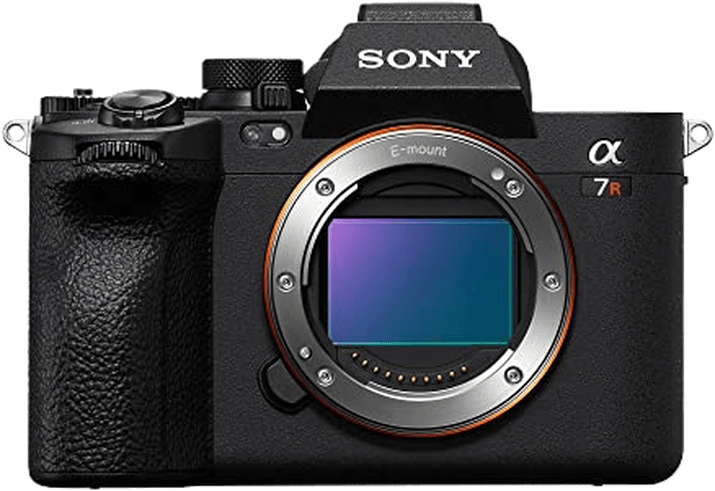Fujifilm X-T4 vs Sony a7R V Comparison
Fujifilm X-T4

Sony a7R V

The Sony a7R V outperforms the Fujifilm X-T4 with a score of 85/100 compared to 76/100. Both cameras are mirrorless and were launched in 2020 and 2022, respectively. They share similarities in size, with the X-T4 measuring 135 x 93 x 84mm and the a7R V at 131 x 97 x 82mm. However, the X-T4 is lighter, weighing 607g, while the a7R V weighs 723g.
The Sony a7R V’s higher score reflects its superior performance and features, justifying its higher launch price of $3999 compared to the X-T4’s $1699. The Fujifilm X-T4, though, offers a more budget-friendly option without compromising too much on quality.
Considering the scores and specifications, the Sony a7R V is the better choice for those seeking top-tier performance, while the Fujifilm X-T4 is a more affordable alternative that still delivers solid results.
Fujifilm X-T4 vs Sony a7R V Overview and Optics
The Sony a7R V outperforms the Fujifilm X-T4 in optics, with a score of 85/100 compared to the X-T4’s 73/100. Both cameras share some common specifications, such as CMOS sensor type, image stabilisation, and lens mounts specific to their respective brands.
The Sony a7R V excels with its 61-megapixel resolution, nearly 2.5 times more than the Fujifilm X-T4’s 26 megapixels. This higher resolution results in more detailed images, beneficial for large prints or heavy cropping. Additionally, the a7R V has a full-frame sensor, providing better low-light performance and a shallower depth of field. The camera’s DXOMARK score of 94 also confirms its superior image quality. However, the Sony a7R V has a slower shooting speed of 10 frames per second (fps) compared to the Fujifilm X-T4’s 20 fps.
On the other hand, the Fujifilm X-T4 has a faster shooting speed, making it more suitable for action and sports photography. Its APS-C sensor size may not provide the same low-light performance as the full-frame sensor in the a7R V, but it maintains a compact form factor, making it more portable. The absence of a DXOMARK score for Fujifilm cameras does not necessarily indicate inferior quality; it simply means DXOMARK does not score Fujifilm cameras.
In the optics comparison, the Sony a7R V stands out for its higher resolution, full-frame sensor, and impressive DXOMARK score. Meanwhile, the Fujifilm X-T4 offers faster shooting speed and portability. Therefore, the choice between these cameras depends on the specific needs and preferences of the photographer.
Fujifilm X-T4 vs Sony a7R V Video Performance
The Sony a7R V outperforms the Fujifilm X-T4 in video capabilities, with a video score of 100/100 compared to the X-T4’s 91/100. Both cameras have some common specifications, including a maximum video frame rate of 120fps and built-in time-lapse functionality. However, the Sony a7R V has the edge in video quality and resolution.
The a7R V’s superiority in video performance is primarily due to its higher maximum video resolution of 8K, compared to the X-T4’s 4K resolution. With video dimensions of 7680 x 4320, the a7R V offers significantly more detail and clarity in its video footage. This difference in resolution allows the a7R V to capture more lifelike and immersive videos, making it the better choice for videographers who prioritize high-quality visuals.
The Fujifilm X-T4, on the other hand, still offers solid video capabilities. Its 4K resolution and 4096 x 2160 video dimensions are more than sufficient for most users and provide excellent video quality. However, the X-T4 falls short when compared to the a7R V’s 8K capabilities.
While the Sony a7R V is the clear winner in terms of video performance, both cameras offer impressive video capabilities. The Fujifilm X-T4 is a solid choice for those who do not require the highest possible resolution, while the Sony a7R V is the superior option for videographers seeking the best video quality available.
Fujifilm X-T4 vs Sony a7R V Features and Benefits
The Sony a7R V edges out the Fujifilm X-T4 with a feature score of 87/100 compared to the X-T4’s 85/100. Both cameras share several key features, including a touchscreen, flip screen, WIFI, and Bluetooth capabilities. However, neither camera offers GPS functionality.
The Sony a7R V surpasses the Fujifilm X-T4 in screen size and resolution. With a 3.2-inch screen and a 2,100,000-dot resolution, the a7R V provides a larger display and sharper image preview than the X-T4’s 3-inch screen and 1,620,000-dot resolution. This advantage allows for better composition and image review on the Sony a7R V.
The Fujifilm X-T4, on the other hand, excels in certain areas despite its slightly lower feature score. While the exact benefits are not specified in the given information, it is important to consider the X-T4’s unique strengths when comparing the two cameras.
Taking these points into account, the Sony a7R V proves to be the superior camera in terms of features, with a larger and higher-resolution screen. However, the Fujifilm X-T4 remains a strong contender and may offer other advantages not mentioned here. Ultimately, the choice between the two cameras depends on individual preferences and specific photography requirements.
Fujifilm X-T4 vs Sony a7R V Storage and Battery
The Fujifilm X-T4 and the Sony a7R V both score 73/100 in storage and battery, showing equal performance in this category. They share common specifications, such as having two memory card slots and accepting SD, SDHC, and SDXC cards. Additionally, both cameras offer USB charging.
The Fujifilm X-T4 uses the NP-W235 battery type, providing 500 shots per charge. In contrast, the Sony a7R V uses the NP-FZ100 battery type, which allows for 530 shots per charge, giving the Sony a7R V a slight advantage in battery life. However, the Fujifilm X-T4 compensates with compatibility for the faster UHS-II SD cards, while the Sony a7R V supports the CFexpress Type A cards.
Considering these factors, both cameras perform well in storage and battery, with the Sony a7R V having a minor edge in battery life and the Fujifilm X-T4 offering faster memory card compatibility. Users can choose based on their specific priorities and preferences.
Alternatives to the Fujifilm X-T4 and Sony a7R V
Are you still undecided about which camera is right for you? Have a look at these popular comparisons that feature the Fujifilm X-T4 or the Sony a7R V:

